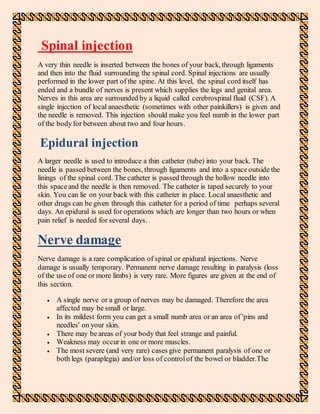This document provides information about spinal injections, epidural injections, and potential nerve damage complications. It describes how spinal injections involve inserting a thin needle into the fluid surrounding the spinal cord, while epidural injections use a larger needle to insert a catheter in the space outside the spinal cord linings. Potential nerve damage complications include direct needle injury, blood clots pressing on nerves, infections near the spinal cord, low blood pressure reducing blood flow, and other rare causes. The majority of nerve damage cases are temporary, but permanent paralysis can occasionally occur.









